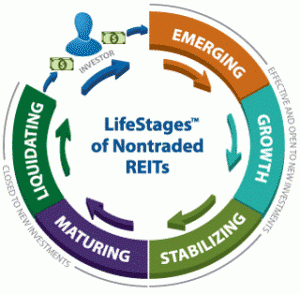For years, interval funds sat quietly on the periphery amidst the alternative investment space, a niche product known to few and used by even fewer. For Kimberly Flynn, President of XA Investments, these funds were never an afterthought. In her view, they represent a well-constructed bridge between the illiquid private markets and the growing demand for accessible alternative investments.
Flynn will take the stage at the Blue Vault Alts Summit to moderate a panel that dives into interval funds. The Summit comes at a time when the demand for “alternative” investments – assets beyond publicly traded stocks and bonds – is reshaping portfolio construction for advisors and their clients.
“When we started tracking interval funds, there were barely a handful, and no one seemed to care about them,” Flynn recalls. That was nearly a decade ago. Today, there are 257 interval and tender offer funds managing tens of billions of dollars in assets, a surge driven by institutional managers, innovative distribution strategies, and the growing appetite among advisors for solutions that combine alternative asset exposure with investor-friendly features.
The surge in interest surrounding interval funds, also known as 40 Act funds, reflects their growing relevance among mass-affluent investors seeking diversification and efficiency. Interval funds stand out for their ability to deploy capital quickly, often leveraging secondary market deals to avoid the performance drag of sitting on idle cash. This nimbleness allows interval funds to compete with, and sometimes outperform, traditional secondary fund managers. Additionally, their built-in liquidity management – through features like quarterly redemption schedules and liquidity buffers in the form of broadly syndicated loans – makes them less vulnerable to market volatility than daily redemption funds, which have historically struggled with the unpredictability of retail inflows and outflows.
“It’s the combination of flexibility and efficiency that has caught the attention of advisors and investors alike,” Flynn explains.
A record year for interval funds
In 2024, the interval and tender offer fund market experienced record growth, driven by increased adoption among advisors and strong performance across leading funds. Total managed assets, inclusive of leverage, reached $208 billion. This surge was fueled by major players like Cliffwater, Partners Group, and PIMCO, which together account for 65 percent of the market share.
Flynn points to the rapid acceleration in new fund filings as a sign of sustained momentum. In 2024, there were 80 new SEC filings, a 73 percent increase over the previous year, with 22 of these filings occurring in the fourth quarter alone. “The number of funds in the SEC registration process is a key indicator of the market’s trajectory,” she says. “We expect the total number of funds to exceed 275 by the end of 2025, with combined assets reaching $220 billion.”
At the Summit, Flynn’s panel will also examine what’s driving this growth. The increasing involvement of high-profile asset managers like KKR, Hamilton Lane, and Segall Bryant & Hamill demonstrates the scalability of these funds. With private credit expected to remain the dominant asset class and new technologies lowering barriers to entry, 2025 is forecasted to be another strong year for interval funds.
Capital deployment and liquidity management
Interval funds share similarities with tender offer funds, as both are evergreen structures offering periodic liquidity. However, a key distinction lies in how liquidity is provided. Interval funds hardwire their liquidity schedule into the prospectus (for example, quarterly for 5 percent), whereas tender offer funds leave this decision to board discretion. This difference makes interval funds more predictable but tender funds more flexible during market disruptions.
Compared to mutual funds, Flynn explains: “Mutual funds require daily liquidity, which restricts them to highly liquid assets. Interval funds, on the other hand, can hold private credit or private equity, offering investors higher returns without daily redemption pressure.”
The funds also incorporate liquidity buffers, such as allocations to broadly syndicated loans, ensuring they can meet redemption requests without jeopardizing their long-term investments. This contrasts sharply with daily redemption leveraged-loan funds, which are vulnerable to the volatility of retail investor behavior.
Many rely on secondary deals, purchasing assets from other funds or investors to put capital to work quickly. Interval funds avoid the cash drag that can erode performance in funds that take longer to invest. Intermediaries note that this urgency often gives interval funds an edge, enabling them to outbid traditional secondary fund managers.
“These features make interval funds resilient,” Flynn notes. “Their design aligns with the needs of both investors looking for access to alternatives and advisors seeking a reliable, scalable solution.”
A defining conversation for advisors
Flynn emphasizes that “The adoption of alternatives is still in its early stages, with allocations averaging only 3 percent according to Cerulli. The question isn’t just how we grow that percentage – it’s about how advisors use alternatives strategically to meet client needs and differentiate their practices.”
“The Blue Vault Alts Summit is a crucial forum for advancing the conversation around alternative investments,” Flynn explains. “It brings together thought leaders, fund managers, and advisors to tackle the opportunities and challenges in the alts space. My panel will focus on how interval funds, and alternatives more broadly, can help advisors differentiate their practices.”
Flynn and her panelists will also tackle practical questions relevant to advisors’ day-to-day operations. For instance, how can advisors handle client inquiries about alternatives when the S&P 500 delivers a strong return, as it did with a 23.3 percent gain in 2024? What role do high-quality managers entering the interval fund space play in helping advisors attract and retain clients? How should advisors think about integrating alternatives into their practice as app-based platforms like YieldStreet or SoFi grow in popularity among younger investors?
“These are the real-world questions advisors are facing,” Flynn says. “Our goal is to arm them with strategies and solutions that they can take back to their practices and implement immediately.”











